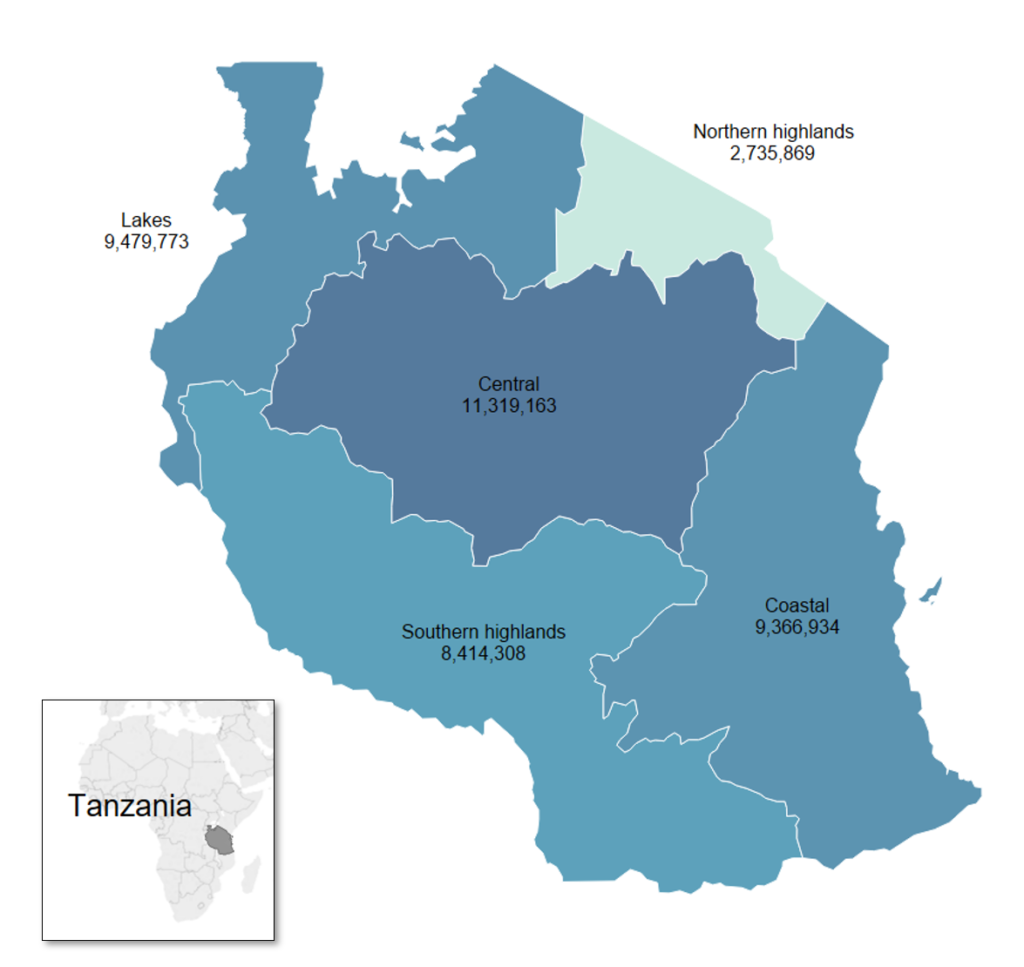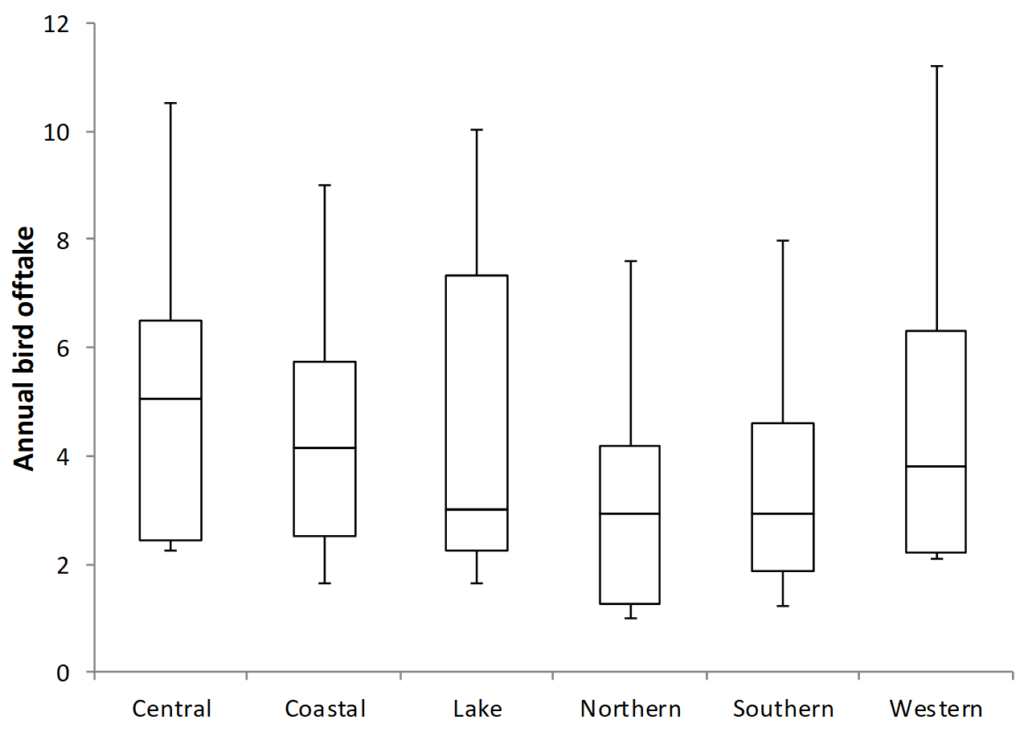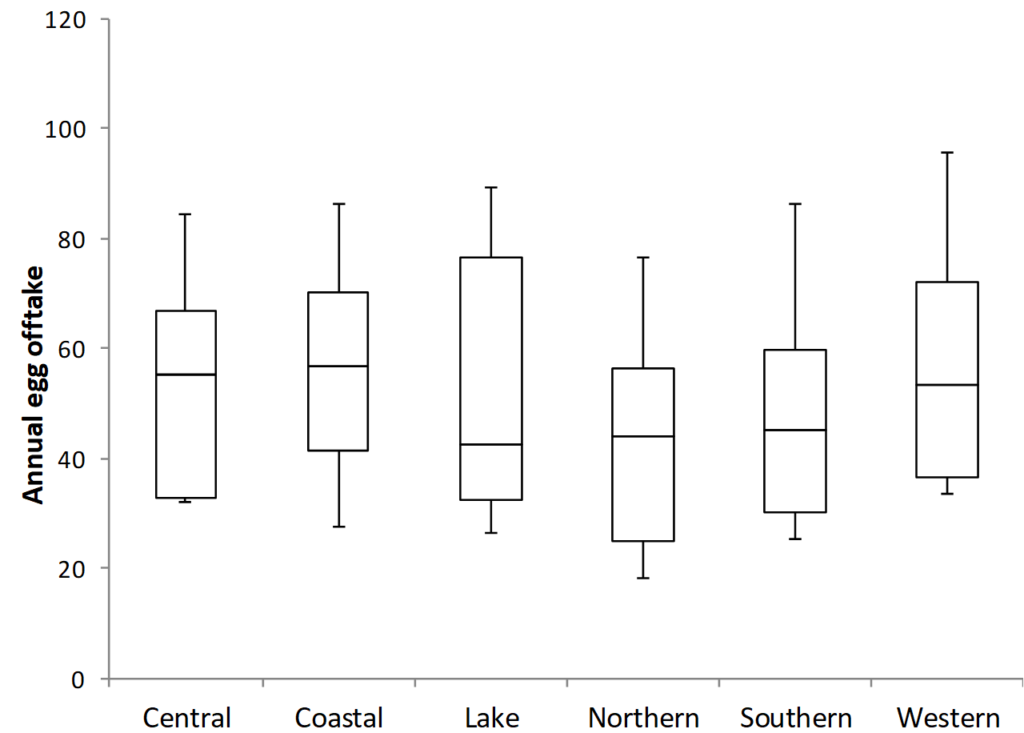Poultry production in Tanzania
The supply of indigenous chickens meets greater than 70% of demand for chicken meat and egg production in rural areas and up to 20% in urban areas within Tanzania.
Total poultry population by agricultural zone (Ministry of Agriculture 2018)
- Tanzania has a poultry flock comprising approximately 72 million chickens.
- Approximately 40 million are indigenous breeds and 32 million are commercial poultry, which include 24 million for meat and 8 million for laying eggs.
- Of the 4.7 million agricultural households in Tanzania, 3.7 million households keep poultry.
- Indigenous chickens are mainly raised by rural dwellers and contribute almost 100% of the poultry meat consumed in the rural areas and 20% of eggs consumed urban areas
Poultry production systems
Traditional poultry system
- The traditional indigenous poultry subsystem is family orientated and an extensive scavenging dual-purpose system, with low egg production (50 eggs/year) and meat production (1.5 kg for mature chicken).
- This traditional system supports the largest proportion of the national flock and the output from this system is much lower than of commercially raised poultry.
- Indigenous chickens have low productivity due to their inherent low genetic potential; 70% of the poultry breeds in Tanzania are low yielding in terms of meat and egg production.
Median bird offtake rates (birds either sold or consumed) range from 3 to 5 birds/year (box plots show 10th, 25th, 50th, 75th and 90th percentile) (Data from LSMS survey 2015)
Improved subsystem
- The improved system is semi-intensive, semi scavenging system with a moderately high production of 150 eggs per hen per year and 1.8 kg live weight at maturity. Both subsystems are family-orientated and traditional.
- The improved subsystems are family-orientated with a mixture of improved local and imported tropical breeds.
Commercial specialised system
- The specialised chicken system is an intensive layers and meat production system with high productivity (2 kg live weight at maturity and 270 eggs per hen per year).
Value chains & market systems
- Most of the farmer marketing organisations involve small groups and tend to be concentrated in urban areas.
- There is a lack of poultry slaughtering and meat processing facilities, as well as issues around the promotion of poultry meat and egg marketing.
National egg yield for a traditional poultry system range from 42 to 57/hen/year (box plots show 10th, 25th, 50th, 75th and 90th percentile) (Data from LSMS survey 2015)
Issues and opportunities for poultry
- There are many advantages of a traditional indigenous poultry system including consistent production based on largely free feed sources from the surrounding environment and use of breeds well adapted to the local environment.
- The traditional indigenous poultry system is inexpensive and low input.
- Traditional indigenous poultry systems suffer inadequate feed supply, high disease prevalence, predation and inadequate shelter.
- There is enormous potential for the poultry industry in Tanzania to enhance food and nutrition security, while contributing to household and economic growth.
References:
- Ministry of Agriculture (2018) 2016/17 Annual Agriculture Sample Survey Crop & Livestock Report, Zanzibar
- LSMS Survey: https://microdata.worldbank.org/index.php/catalog/2862
Download our poultry production in Tanzania fact sheet here.



